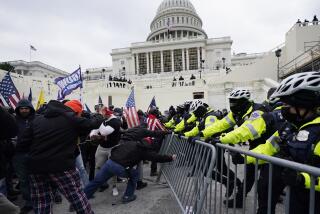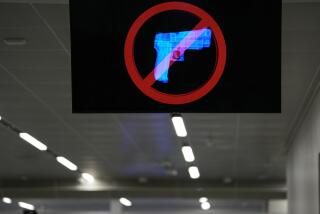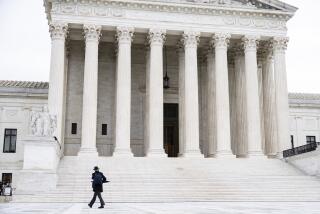Protection From Illegal Evidence Backed
- Share via
WASHINGTON — The Supreme Court, providing a rare victory for criminal defendants, ruled Wednesday that prosecutors may not use illegally obtained evidence at a trial to show that a defense witness had lied to the jury.
On a 5-4 vote, the high court chose to rigidly uphold the so-called exclusionary rule against the use of illegal evidence, even at the expense of the “truth-seeking function” of a trial.
“As long as we are committed to protecting the people from the disregard of their constitutional rights during the course of criminal investigations, inadmissibility of illegally obtained evidence must remain the rule, not the exception,” Justice William J. Brennan Jr. wrote for the court.
The decision is significant for what the court did not do. Prosecutors had hoped that a more conservative high court would allow a much broader use of illegally obtained evidence if it could be used to rebut questionable testimony by defense witnesses.
Instead, one of the court’s usual hard-liners on crime, Justice Byron R. White, joined sides with Brennan’s liberal allies. White did not explain his stand, which resulted in a ringing affirmation of the exclusionary rule.
Since the court imposed the exclusionary rule on state and local law enforcement in 1961, it has allowed a variety of exceptions. If police officers acting in “good faith” raid a house based on a search warrant that later proves to be flawed, their evidence may nonetheless be used at a trial. In addition, prosecutors may use illegal evidence to contradict a defendant who takes the witness stand and lies.
Based on such exceptions, the Illinois Supreme Court said last year that illegal evidence may also be used to rebut false testimony by a witness for the defendant.
The ruling stemmed from the trial in Chicago of Darry James, a youth who was convicted of killing another young man in a 1982 gunfight.
Five witnesses at James’ trial testified that the defendant, sporting shoulder-length reddish hair, did the shooting. But a family friend testified--falsely--that James had black hair on the day of the shooting.
In the trial, prosecutors were able to rebut this testimony because the police, after illegally arresting James during their investigation, had obtained his admission that he had dyed his hair from red to black after the shooting.
But the Supreme Court held that the police evidence, although apparently accurate, could not be used in a subsequent trial of James. It ordered a new trial with that evidence excluded. (James vs. Illinois, 88-6075.)
In a sharp dissent, Justice Anthony M. Kennedy complained that “today’s opinion grants the defense side in a criminal case broad immunity to introduce whatever false testimony it can produce from the mouth of a friendly witness.” He was joined by Chief Justice William H. Rehnquist and Justices Sandra Day O’Connor and Antonin Scalia.
In a second criminal case, this one a prosecution victory, the court ruled that a jury may be told about a defendant’s past criminal activities, even if the defendant was acquitted in the earlier cases.
In this case, Rueben Dowling, a Virgin Islands man, was charged with robbing a bank of $12,000 while wearing a ski mask. At his trial, a woman testified that Dowling had broken into her home and robbed her, also while wearing a ski mask. However, Dowling had already been acquitted of this robbery.
Dowling was convicted of bank robbery. On a 6-3 vote, the high court upheld the conviction and said the woman’s testimony did not put Dowling in double jeopardy.
More to Read
Sign up for Essential California
The most important California stories and recommendations in your inbox every morning.
You may occasionally receive promotional content from the Los Angeles Times.














